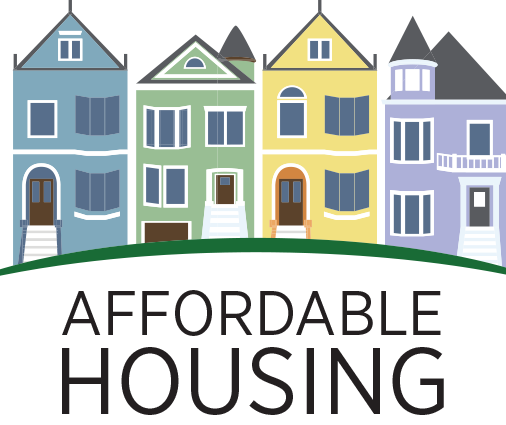A SUN staff report — Why is there a need for more affordable housing?
The simple answer is that the residents who work here in the Valley are finding it impossible to afford or even locate suitable places to live. The dominant hospitality/tourism sector provides mostly low-paying jobs at or slightly above the minimum wage. Similarly, restaurants generally offer low-paying jobs lacking significant benefits. Agricultural workers are among the lowest paid workers in Sonoma Valley, and also lack meaningful benefits.
To a significant degree, these low-paid workers are Latino, and some of them are undocumented. Historically hard-working, these workers are generally loathe to complain or aggressively seek higher pay and benefits; virtually none of them are unionized, and must fend for themselves.
Even teachers and health professionals, fire department personnel and mid-level professionals are finding themselves priced out of housing. About 50 percent of school district employees do not live locally, and less than that are employed in local government. Such employers find filling employment positions difficult because fairly-priced housing is so hard to find. Only 16 percent of the people who work in the City of Sonoma live in the City of Sonoma.
Real estate market conditions also work against the creation of affordable housing; the so-called “invisible hand of the market” pushes home prices and rentals to their highest possible limits. An absence of rent control surrenders total control of housing inventory to real estate investors, some of whom then use their properties as pricey vacation rentals for tourists or second homes. A wealthy and burgeoning Bay Area population provides a steady stream of investors and buyers eager to enjoy our “wine country” lifestyle. That lifestyle is heavily promoted through the circulation of slick magazines functioning as promotional literature for realtors and tourism promoters; demand increases while supply diminishes, pushing up prices.
When was affordable housing being created in the past?
Creating affordable housing was a major impetus in the past activities of Redevelopment Agencies. Both the City and County of Sonoma had their own such agency, and of the property tax revenues collected by the State of California returned to redevelopment agencies, 20 percent was mandated to be used to create affordable housing. Given that such revenues were, over time, in the tens of millions, a significant sum went towards affordable housing.
Moreover, various incentives and programs were put in place to encourage the creation of affordable housing. “Inclusionary housing” provisions required that 20 percent of the houses in any new market-rate development of over five units be designated affordable. Government standards dictate what constitutes what affordable means, and how long a given housing unit remain affordable. “Density bonus” programs allow developers to create a higher number of units in a given development if certain affordable criteria are met, and waiting time on a housing allocation list eliminated if proper criteria met.
Redevelopment agencies provided direct funding, land donations, fee waivers, buyer down payment assistance and the incentives noted to promote a type of housing market-rate developers would prefer to avoid. All this contributed to an active and productive redevelopment agency affordable housing program. It all changed in 2012, when Governor Jerry Brown convinced the state legislature to eliminate funding for redevelopment agencies, thereby ensuring their demise.
The Governor’s concerns were legitimate. Though funds for affordable housing were used and did indeed create housing, counties and cities were often misusing the balance of redevelopment agency funds. Intended to cure “blighted” areas, stimulate tired economies and to uplift neighborhoods, the Governor pointed to numerous examples of misuse; corruption, improper transfer of lands and assets, sweetheart deals, and a general over-stretching of the use of funds, combined with state budgetary constraints, buried redevelopment, and as for affordable housing, the baby was thrown out with the bath-water.
With the end of revenue stream, redevelopment agencies folded or were transferred to “successor agencies” along with any remaining assets of that agency. Other than continuing payments for long-term bond obligations incurred by agencies, the spigot was turned off. To almost all extent and purposes, affordable housing ceased to be created, unless it was already in the existing pipeline. Meanwhile, the demand continued to grow, as it does today.
How will new affordable housing be created going forward?
The answer, of course, is almost all about money. Governments inaction in creating revenues for housing is largely responsible for our current shortage. Somehow, a revenue source dedicated to the creation of affordable housing must be developed to replace the lost revenues that used to be available through redevelopment. These revenues must be combined with a new set of governmental regulations, rules and conditions associated with real estate development.
As to the revenue side of the equation, there are multiple options. The County of Sonoma has already raised the county transit occupancy tax with the intent of using the increased revenues for affordable housing. The City of Sonoma should do the same as soon as possible. A non-profit, housing trust fund should be set up immediately into which contributions can be made which are tax deductible. In-lieu and housing impact fees should be established, and at levels which produce meaningful revenues, not the at minimum but the maximum. A nexus study linking the need for housing with such fees has been completed, and the City of Sonoma needs to take action now.
On the regulatory side, the percentage of affordable housing required by the City’s inclusionary requirement should be tiered; the higher the number of units, the larger the percentage that must be affordable. For example, ten and under would remain at 20%, but as the number of units increases, the percentage goes up; at 50 units, the affordable housing inclusionary percentage should be at least 35%. Moreover, incentives to develop affordable housing should be improved with formalized opportunities; tax and development fee deferrals, streamlined approval and permitting should all be included. Rules requiring commercial parcels zoned to include housing must not be waived, but strictly enforced.
Both the City and County of Sonoma should be “land banking,” meaning purchasing available and properly zoned sites appropriate for affordable housing. Land prices will only continue to rise in the future, and land-banking provides possible sites for development, trade or donation.
Creating new affordable housing is possible, but it will require a clear and consistent commitment on the part of government, which must exercise a leadership role in mobilizing community acceptance of higher density projects. If we are to avoid sprawl into the surrounding agricultural greenbelt, higher-density infill development is the trade-off. The rental market will not be satisfied through market forces. Only through a programmatic approach will the area’s affordable housing crisis be solved. If not solved, all sectors of the Valley will suffer as wealth inequality exaggerates social and cultural differences, leading to increases in poverty, hunger, crime,, addiction, hiring difficulties, a weakened economy and greater injustice.






“If not solved, all sectors of the Valley will suffer as wealth inequality exaggerates social and cultural differences, leading to increases in poverty, hunger, crime, addiction, hiring difficulties, a weakened economy and greater injustice.”
~ Sadly true. However, if past foot-dragging is any indication, both the Planning Commission and City Council will piously and publicly rend their garments and beat their breasts about the lack of affordable housing, and continue to do nothing. The next do-nothing housing exercise by public officials will be to bemoan the lack of affordable housing while granting a permit for the construction of a huge hotel on W. Napa Street without requiring its millionaire local developers to include a housing element. To be fair, however, in lieu of a housing element for the hotel, City Council will continue to allow the developers to contribute in-kind political donations to their next re-election campaigns.
Let’s see what happens at SDC. Here is the perfect opportunity to build housing, keep it concentrated to the areas that are now built, keep all the open space, include a large percentage of affordable housing, include community services and shopping, so residents do not have to get in their cars for basic needs, and include some “commercial” that is beneficial to residents and not tourism. If instead we get another “world class”, luxury enclave for the wealthy, we will know it is all over for our valley. Those that keep extolling the free market and that we can not stop progress and growth are really saying, let’s sell it to the highest bidder. Think about how your elected officials vote on these projects. If they say the words affordable housing every time they open their mouths, but OK every luxury tourist development that comes along, then it is time for a change.